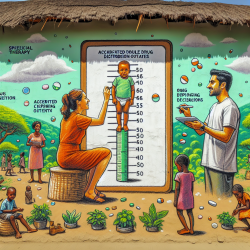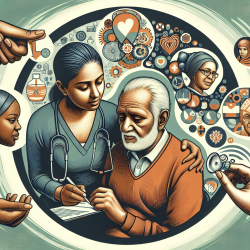Introduction
In the aftermath of disasters, such as Hurricane Katrina, the psychological impact on survivors can be profound and long-lasting. A recent study published in the European Journal of Psychotraumatology delves into the psychosocial resources that influence posttraumatic stress symptom (PTSS) trajectories among disaster survivors. This blog aims to translate these findings into actionable insights for practitioners, particularly those involved in online therapy services like TinyEYE, to enhance their skills and improve outcomes for children affected by trauma.
Understanding PTSS Trajectories
The study identifies three distinct PTSS trajectories among Hurricane Katrina survivors: High-Decreasing, Moderate-Decreasing, and High-Stable. Each trajectory is characterized by varying levels of hope, mindfulness, and coping strategies over time. Understanding these trajectories can help practitioners tailor their interventions to meet the unique needs of each survivor.
Key Psychosocial Resources
The research highlights five inductive themes that underpin the PTSS trajectories:
- Hope: Survivors with decreasing PTSS trajectories often expressed hope and set future goals, which facilitated their recovery.
- Adaptive vs. Maladaptive Avoidance: Avoidance behaviors initially helped survivors cope, but long-term avoidance hindered emotional processing and recovery.
- Delayed Emotional Processing: Immediate post-disaster challenges often delayed emotional processing, emphasizing the need for timely psychological support.
- Acceptance and Finding Meaning: Survivors who accepted the disaster and found meaning in their experiences demonstrated better resilience.
- Coping Strategies: Effective coping strategies, supported by social networks, were crucial for recovery.
Implications for Practitioners
Practitioners can leverage these insights to enhance therapy outcomes for children affected by trauma. Here are some practical applications:
- Foster Hope: Encourage children to set achievable goals and cultivate a sense of hope for the future. This can be integrated into therapy sessions through goal-setting exercises and positive reinforcement.
- Address Avoidance: Help children recognize and address avoidance behaviors. Encourage open discussions about their experiences and feelings to facilitate emotional processing.
- Provide Timely Support: Recognize the importance of early intervention. Ensure that children receive psychological support soon after a traumatic event to prevent delayed emotional processing.
- Encourage Acceptance: Guide children in finding meaning in their experiences. Use storytelling and narrative therapy techniques to help them process their emotions and build resilience.
- Strengthen Coping Strategies: Equip children with effective coping strategies, such as mindfulness and relaxation techniques. Encourage them to build and rely on supportive social networks.
Encouraging Further Research
The study underscores the importance of ongoing research to better understand the interplay between psychosocial resources and post-disaster resilience. Practitioners are encouraged to engage in research initiatives, collaborate with academic institutions, and contribute to the growing body of knowledge in this field.
To read the original research paper, please follow this link: Psychosocial resources underlying disaster survivors’ posttraumatic stress symptom trajectories: insight from in-depth interviews with mothers who survived Hurricane Katrina.










